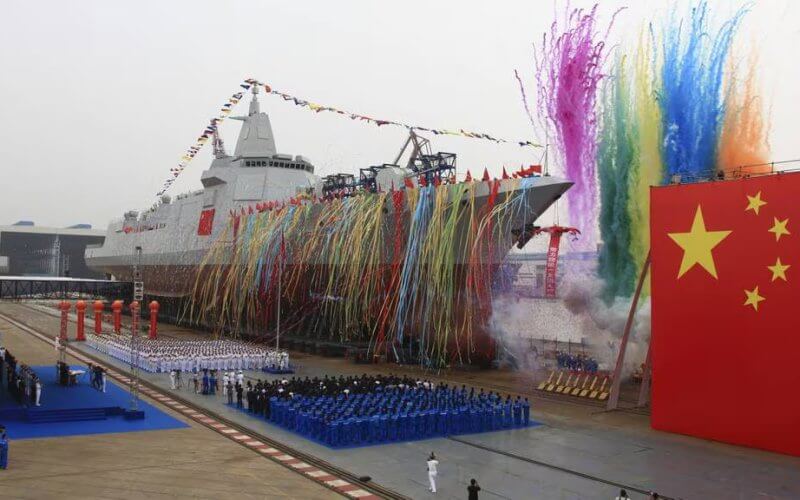By: Jake Smith, Daily Caller News Foundation
China’s shipmaking capabilities are far outpacing that of the U.S. and its Western allies, The Wall Street Journal reported Tuesday.
China currently represents over half of the world’s shipbuilding output for both commercial and military vessels, according to the WSJ. Meanwhile, the U.S. represents just a small fraction of the globe’s total shipbuilding output, and its Navy struggles to expand amid maintenance delays, worker shortages and a lack of supplies.
“The scale [of China’s shipbuilding] is just almost hard to fathom,” Thomas Shugart, adjunct senior fellow on maritime competition at the Center for a New American Security, told the WSJ. “The degree to which it dwarfs American shipbuilding is just unbelievable.”
In 2002, China represented roughly 8% of the world’s total shipbuilding output; that number had more than quadrupled by 2012 and hit 51% by 2023, according to the WSJ. China’s ship-making powerhouse underscores a larger goal by Beijing and Chinese President Xi Jinping to assert full control over the maritime stage militarily and economically, as the country’s shipbuilding docks often build both naval and commercial vessels.
“Where we used to see some levels of division between the commercial side of things and the military side of things, those lines have just become increasingly blurred,” Matthew Funaiole, a senior fellow of the China Power Project at CSIS, told the WSJ.
The China State Shipbuilding Corporation owns several subsidiaries which in turn own and operate massive shipyards that build both Chinese commercial and naval vessels, as well as foreign contracted vessels, according to the WSJ. Foreign and Western nations including France and Taiwan have multi-billion dollar contracts with China State Shipbuilding Corporation to build dozens of different vessels like oil tankers and shipping container vessels.
“China benefits from a massive commercial shipbuilding workload… Clearly, China’s commercial shipbuilding industry provides them a massive advantage when it comes to shipbuilding capacity,” Rear Adm. Thomas J. Anderson said during a congressional hearing in May 2023.
Some satellite imagery reviewed by CSIS depicts booming shipyards with dozens of different naval and commercial vessels on the island of Changxing, which is becoming a mammoth “shipbuilding base.”
Conversely, U.S. shipbuilding abilities have dwindled in recent years, according to the WSJ. Unlike China, the U.S. produces a relatively menial amount of commercial vessels, and many shipyards only have one contract going at a time, often the U.S. Navy.
Maintenance delays and worker and component shortages have resulted in a massive backlog of vessel production or repairs, according to the WSJ. For example, the Navy has a contract for two Virginia-class submarines per year but the Department of Defense said they are only being received at a rate of 1.4.
The size of the U.S. Navy has stalled out; the current 292 total fleet of vessels is likely to stay the same or become smaller, according to the WSJ. Meanwhile, China’s naval fleet of 370 vessels is expected to grow to approximately 435 by 2030, and the warships being produced by shipyards often come with the most state-of-the-art wartime and technical capabilities.
If China decides to launch an invasion against Taiwan and the U.S. opts to militarily intervene, both countries would likely deploy a series of naval vessels to the region in a bid to try and establish maritime dominance around the island, and would have to have swift vessel production and repair capabilities for sustained conflict.
China’s shipyard’s expedited shipmaking abilities and proximity to the island of Taiwan would give it an advantage in such a scenario, according to the WSJ. The U.S. Navy is still stronger from a quality perspective, but China’s high quantity gives the country its own advantage, and both factors would stack against each other.
Related Story: ‘Underwater Great Wall’: China is Closing the Submarine Gap with the U.S.










